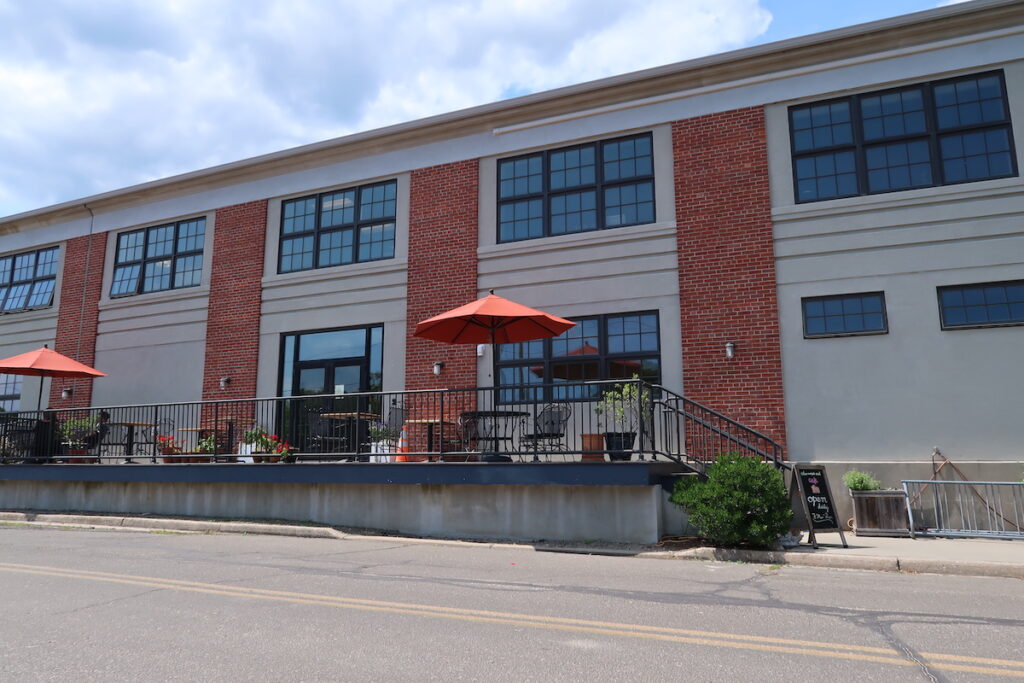Southold deer population poses health threat

KATHARINE SCHROEDER PHOTO
Many of the nearly 100 people who packed the house at the town’s deer
management forum Tuesday night said they’ve contracted at least one of a
number of deer tick-borne diseases.
Southold’s burgeoning deer population is much more than a nuisance, it’s a health crisis.
Many of the nearly 100 people who packed the house at the town’s deer management forum Tuesday night said they’ve contracted at least one of a number of deer tick-borne diseases.
Carol Wells just finished a 28-day doxocycline dosing for Lyme disease and has suffered from numerous tick-borne diseases since the day she moved to Southold in 2002.
“I would happily volunteer for a human Frontline trial,” she said during the gathering at the town Recreation Center in Peconic. “I’m a tick magnet. They love me. I keep DEET in my car. I spray it on myself constantly. What’s worse, the DEET or the dox?”
Justine Gilvary said a friend questioning those who had been sick documented people who’d lost their spleens and children whose faces had been paralyzed because of complications from deer tick borne diseases.
John Woods of Peconic, who said that he has had Lyme disease twice, also recently hit a deer with his car. He estimated that he spends $3,000 per year to protect himself from deer.
“I’m thrown by the fact that they’re no longer afraid of us,” he said. “It’s getting to be almost an out of control problem.”
Wildlife scientist John Rasweiler added that he is concerned that a large deer population could spread far more diseases and parasites than just the omnipresent Lyme Disease.
“I look at our deer population and all kinds of flags go up,” he said. “The whole story of West Nile Virus…this can very easily happen again and here we have a wildlife population that could serve as a reservoir for this kind of disease.”
He estimated that there are about 10,000 deer in Southold, but last year hunters only killed 462. He added that most deer produce two or three young per year.
“If we don’t humanely cull the herd, nature is going to take its course,” he said. “Sooner or later they’re going to die off either of disease or hunger.”
Southold Town, which has begun to push nuisance hunting and this year agreed to lease a refrigerator truck for hunters to store venison to be donated to Long Island Cares, hosted the forum.
Michael Clark, who oversees deer management for the New York State Department of Environmental Conservation, said he is pushing the state to allow bow hunting within 200 feet of a house. That, he said would dramatically increase the amount of huntable land.
He added that homeowners who want hunters to control deer on their property have the ultimate control over who can hunt and when on their land.
State Assemblyman Mark Alessi, who was also in attendance, said that he plans to introduce legislation that will decrease the bow hunting restriction to 250 feet.
Mr. Clark added that he is looking for butchers on the East End who are willing to help process venison caught by hunters who donate the meat, since the only venison processors on Long Island are in Oakdale and Farmingville. The state pays $1.50 per pound for their services.
“If you know a person who likes to cut up meat, put them in touch with me,” he said.
Town Supervisor Scott Russell said that he’s received many emails and phone calls imploring him to consider using contraception on deer. But New York State, which views venison as a fundamental food source, will not allow contraceptive chemicals in game meat. He also said that the town has been dealing with people defacing and destroying hunting area signs since town workers began putting them up this month.
Joe Gergela, president of the Long Island Farm Bureau, said that deer have dramatically changed farming to the point where expensive deer fences are necessary to ensure that farmers don’t lose their crops.
“We’ve seen deer digging potatoes with their hooves in the Hallockville area,” he said.








